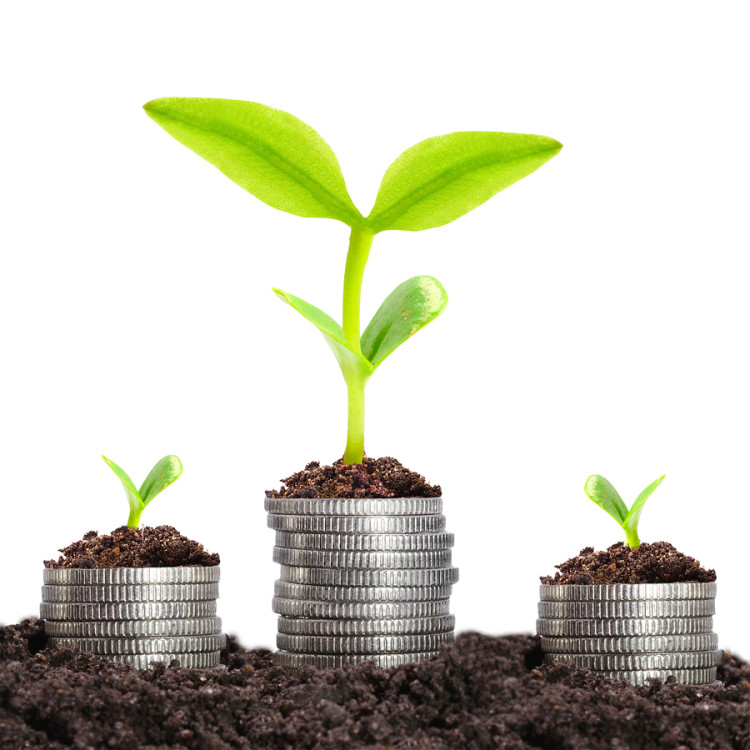What is the Most Profitable Hydroponic Crop to Grow?

BY MIRANDA CUNNINGHAM · JANUARY 23, 2021
A person considering growing crops hydroponically for profit should do their research before beginning to set up their hydroponic gardens. To be successful at this enterprise, a person must purchase the correct equipment, install it properly, and choose the best crops to grow for profit. This should not be a seat-of-the-pants operation. Hydroponic gardening done correctly yields healthy, salable crops all year round. Hydroponic gardens set up inside an appropriate building are not subject to winter freezes or summer dry spells.
Getting Started With Hydroponic Gardening
To start a hydroponic garden, gather all the information available to help choose the correct equipment and crops to grow. Find or build the best building for hydroponic gardening. The building should be large enough for the starter garden and have room for expansion as the knowledge and business grows. Hydroponic gardening has a hefty initial cost, and those funds must be available. Then, the first crops should be ones that will bring in a sizable cash flow the first season.
Suggested article: What is the Most Profitable Hydroponic Crop to Grow?
After making the investment in hydroponic gardening building and equipment, the grower must choose the correct first crops to make part of their investment back quickly. Some of the most profitable crops to start with are:
Bay leaves are an herb that is much valued in cooking and goes for about $30 per pound. This herb is used in soups, hot-dishes, roasted pork and chicken, and more. Bay leaves are grown on laurel trees and are a slow-growing crop using the drip irrigation system. The plants are cold-resistant but prefer a nice warm, dry growing environment. They are low maintenance and can bring high income.
Chives taste like onion and are used to season many dishes. They are an easy, profitable crop to grow. They are also a natural insect repellent. Chives can be planted in small, close spaces and can yield $14.00 per pound.
Ginseng can sell for from $500 to $600 per pound when dried. It is a root crop used in teas and energy drinks. It is also used in herbal supplements. It contains antioxidants. This crop grows slowly, so the turn around takes more time. Since it has a high price, the time is worth it.
Dill is very easy to grow and it is a valued herb selling for around $14 per pound. It needs to be replanted every three to four weeks since plants do not regrow when pruned. It is easy to grow with a fast turn around, so it is a wonderful hydroponic crop.
Basil is a high-demand herb that is sold for around $14 per pound. It is easy to grow with a lot of light. Basil comes in more than 100 species with varied flavors from lime to licorice. Most growers plant several types of basil.
Cilantro can be another high-profit herb for hydroponic gardening. It is used in Mexican, Chinese, and Thai cooking as well as many American dishes. Harvest can come in as little as three or four weeks to help with cash flow.
Strawberries are a fruit that is always popular and brings $2 to $6 per pound. It is most popular in the winter when traditionally grown strawberries are out of season. Strawberry plants can be heavy producers.
Lettuce will grow in the simplest hydroponic systems with minimal attention. When the outer leaves are harvested, the inner leaves grow to take their place. They don’t like hot temperatures and should be grown at 50 to 70 degrees Fahrenheit, and supplying them with nitrogen will increase the yields.
Tomatoes give a steady supply of produce when grown correctly. They like temperatures between 58 and 79 degrees Fahrenheit. This crop requires a little more expertise for best results but is a good income maker.
Cucumbers grow best with lots of moisture, warmth, and nutrients, and are one of the highest-yielding vegetables hydroponic gardeners can grow. They need to be grown with supported trellises since they are vining plants.
Peppers can grow in any season and give superior yields. They grow best in an ebb and flow type system, and they require a little more room and special lighting.
These are only part of the vegetables that can be grown in hydroponic gardens for maximum profit or for family use. Additional plants to grow include spinach, Swiss chard, kale, celery, beans, mint, and parsley. It is wise to grow a variety of crops to keep a steady harvest and income for commercial growing operations.
Setting Up a Hydroponic Garden
There are six types of hydroponic growing systems to consider:
- The wick system is good for beginners. This is the easiest system mechanically with no moving parts or electrical components. But, it is limited in crops and size. It calls for a water reservoir, a wick, a growing tray, a growing medium, and a light fixture.
- The water culture system is also good for beginners. This system requires a styrofoam platform, a water reservoir, nutrient-enriched water, an aeration system, and seedlings in net pots. This system is only good for water-hungry plants such as lettuce.
- The ebb and flow system is good for beginners. It is more complicated but very versatile. This system requires a water reservoir, water, hydroponic fertilizer, a growing tray, seedlings in net pots, a grow light, two tubes, one submersible pump, and an electronic timer.
- The drip system is relatively simple. It requires an electronic timer, submersible water pump, air pump, nutrient solution, tubing, grow trays, water containers, water, growing medium, drip emitters, and seedlings in pots.
- The nutrient film technique is a more advanced system. It requires a grow light, an air stone and pump, tubing, a submersible pump, a water reservoir, water, hydroponic fertilizer, and seedlings in net pots.
- The aeroponic system is also for more-advanced gardeners. This system has plant roots suspended in the air and periodically misted with water and nutrients. It requires advanced pumps and misters. If the equipment does not work, the roots can dry out and die in a short time. This system requires more vigilance. You will need the water containers, water, nutrients, tubing, seedlings in net pots, pumps, and sprayer with misting head.
The choice of the hydroponic system will depend on many factors, including the size of the proposed operation, budget, plants to be grown, skill level, and the time available to oversee the gardens. Some growers use several systems for different crops.
It might be a good idea to start small and try several systems before deciding on the main system for a large operation. Buy the equipment and the seedlings from reputable suppliers with good customer service reputations. Don’t cut corners on the garden set up, and plan on spending the needed time overseeing the operation. Equipment problems need to be discovered and fixed quickly to avoid the loss of plants.







No Comment